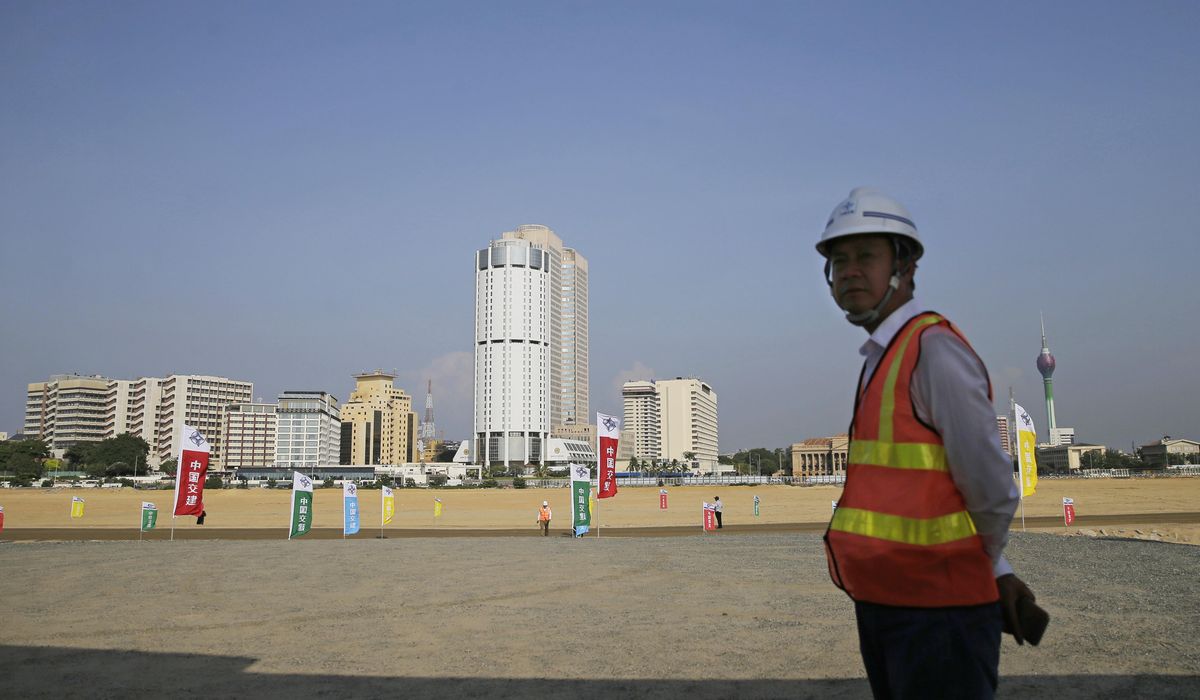
China’s massive “Belt and Road” global infrastructure funding strategy is based on a “secretive overseas development finance program” that has saddled dozens of developing countries with nearly $400 billion worth of “hidden debt,” according to a study published Wednesday.
Some 35% of the more than 13,000 projects financed by Chinese government loans have also featured “major implementation problems,” including corruption scandals, environmental hazards, labor violations and public protests, said the study by AidData, a research outfit at the Virginia-based College of William & Mary.
The U.S. and other democracies are scrambling to offer alternative development funding mechanisms for lower-income countries in a bid to counter China’s Belt and Road Initiative, which the communist government rolled out nearly a decade ago as a springboard for its rising global influence.
The initiative has been a flagship program of Chinese President Xi Jinping. It is designed to earn goodwill in countries across Southeast Asia, Europe, Africa and Latin America while generating construction projects for Chinese firms and infrastructure to create new trading routes and export opportunities. Participants include traditional Chinese trading partners such as Cambodia and Laos and U.S. allies such as Italy, Greece and Saudi Arabia. They are working on projects such as roads and bridges, power plants, rail lines, fiber-optic networks and port improvements.
U.S. officials have been warning for years that the program often involves predatory lending designed to ensnare poorer countries so China can later wring political and natural resource concessions in exchange for debt relief.
Some critics have even accused China of using the Belt and Road Initiative as cover for a multidecade strategy of laying the foundation for overseas military bases. Beijing sharply rejects the accusations and regularly asserts that it is the U.S., not China, that has a history of militarizing foreign aid.
The AidData study offers a wealth of new detail on murky aspects of the Chinese global development initiative. It says Belt and Road is based on loans that often feature heavily conditioned liabilities. These go undisclosed to borrowing nations in Africa, Southeast Asia and other corners of the world.
The study examined 13,427 projects in 165 countries that China has financed during the years leading up to and after the Xi government’s 2013 public rollout of the Belt and Road Initiative, with total loans and grants of some $843 billion. Many of the deals require the borrowers to use Chinese materials and workers for the projects and promise critical assets as collateral to repay the loans.
Beijing has “contractually obligated overseas borrowers to source project inputs (like steel and cement) from China” while “allowing countries to secure and repay loans with the money they earn from natural resource exports to China,” the report found.
“Collateralization has become the linchpin of China’s implementation of a high-risk, high-reward credit allocation strategy,” the report said. “To secure energy and natural resources that the country lacks in sufficient quantities at home and maximize investment returns on surplus dollars and euros, Chinese state-owned creditors have rapidly scaled up the provision of foreign currency-denominated loans to resource-rich countries that suffer from high levels of corruption.”
With regard to “hidden debt,” the study outlines how nearly 70% of China’s overseas lending is “directed to state-owned companies, state-owned banks, special purpose vehicles, joint ventures, and private sector institutions.” These debts, “for the most part, do not appear on government balance sheets” in developing countries.
The approach “has blurred the distinction between private and public debt and introduced major public financial management challenges,” the study’s authors wrote. Chinese debt holdings around the world are now “substantially larger than research institutions, credit-rating agencies, or intergovernmental organizations with surveillance responsibilities previously understood.”
Ammar A. Malik, a senior research scientist at AidData and a co-author of the “Banking on the Belt and Road” study, said the Chinese government’s “reluctance to disclose detailed information about its overseas development finance portfolio has made it difficult for low-income and middle-income countries to objectively weigh the costs and benefits of participating in the BRI.”
“It has also made it challenging for bilateral aid agencies and multilateral development banks to determine how they can compete — or coordinate and collaborate — with China to address issues of global concern,” Mr. Malik said on AidData’s website.
Forty-two countries now have levels of public debt exposure to China exceeding 10% of gross domestic product, according to the study, which cites a potential rise of “buyer’s remorse” among developing nations that have embraced Chinese lending.
The Washington Times reported in 2018 about the spread of unease over Belt and Road loans in several nations, including Malaysia, Pakistan, the Maldives and Sri Lanka. Malaysian Prime Minister Mahathir Mohamad then revealed that his government was canceling more than $20 billion in Chinese-funded projects because “we do not want a new version of colonialism.”
Belt and Road skeptics also point to the credit squeeze in Sri Lanka. The government there was pressured into selling the control of its port of Hambantota to a Chinese state-owned company after falling behind on $1.5 billion in Belt and Road financing.
That hasn’t stopped Mr. Xi’s rapid expansion of the Belt and Road Initiative.
According to a Council on Foreign Relations survey this year, “39 countries in sub-Saharan Africa have joined the initiative, as well as 34 in Europe and Central Asia, 25 in East Asia and the Pacific, 18 in Latin America and the Caribbean, 17 in the Middle East and North Africa, and six in South Asia. These 139 members of BRI, including China, account for 40% of global GDP.”
“It remains to be seen if ‘buyer’s remorse’ among BRI participant countries will undermine the long-run sustainability of China’s global infrastructure initiative,” the study said. “However, it is increasingly clear that Beijing will need to address the concerns of host countries in order to sustain support for the BRI.”
U.S. officials have struggled for years to generate momentum for lending initiatives to counter Belt and Road. Some have argued that the emerging U.S.-Japan-Australia-India “Quad” alignment of major democracies aimed at countering communist China’s rise as a global power should include a development financing mechanism.
The AidData study said the U.S. and its allies are “coalescing” around a “Build Back Better World,” or “B3W” infrastructure initiative, to be guided by “the principles of sustainable and transparent financing, good governance, public sector mobilization of private
capital, consultation and partnership with local communities, and strict adherence to social and environmental safeguards.”
The study noted that the Group of Seven leading industrial nations — the U.S., Canada, France, Germany, Italy, Japan and the United Kingdom — announced the B3W initiative in June.








